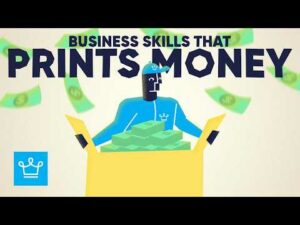The Untold Survival Secrets Every Entrepreneur Must Know to Thrive When the Economy Tanks
Let’s cut to the chase—“economic slowdown.” Doesn’t exactly roll off the tongue like a catchy tune, does it? For entrepreneurs, it’s more like a foghorn warning, signalling rising costs, skittish customers, or just that thick cloud of uncertainty hanging over your daily hustle. Running a business in such times? Imagine trying to captain a ship through a relentless storm with no clear horizon in sight. It’s tough, no sugarcoating that.
But here’s a nugget of truth you can cling to: adversity doesn’t last forever. Businesses that flex, innovate, and keep their eyes on the prize don’t just survive—they come out battle-hardened and stronger. I tell my clients all the time, you can’t change the weather, but you sure as heck can learn to steer your ship smarter through the tempest.
So, when the economic seas start churning, how do you steady your vessel? Buckle up, we’re diving right in.
Understanding Economic Slowdowns: Not All Creatures Are the Same
Not every slowdown is cut from the same cloth. Knowing which beast you’re wrestling helps tailor a sharper game plan. Sure, they might all scream “declining sales” and “worried customers,” but the why and the how-long? That’s where the story changes. Let’s break down the most common offenders:
- Recession: Two straight quarters of shrinking GDP—basically the economy hitting the brakes hard. This isn’t picky; it touches nearly all industries. Spending drops, credit dries up a bit, and investments freeze. Even rock-solid businesses can feel the chill as demand dips.
- Inflationary Slowdown: Here’s the sneaky one—prices sprint uphill while wages play catch-up. When wallets tighten, spending slows down. For business owners, costs go up, but customers can’t keep pace, squeezing those profit margins painfully tight.
- Stagflation: The economic equivalent of getting the worst of both worlds—stagnant growth, rising unemployment, AND inflation climbing. You get stuck not being able to raise prices without losing customers. A true head-scratcher!
- Sector-Specific Downturn: Sometimes the storm’s localized. A plunge in oil prices might slam energy companies but leave tech or retail relatively unscathed. If you’re in that sector, even a “stable” broader economy won’t save you from the squeeze.
- Global Economic Crisis: Think global earthquakes like the 2008 crash or the COVID-19 pandemic—shockwaves ripple across virtually every sector, messing up supply chains, labor pools, and changing consumer behaviors dramatically.
Cutting Costs: Not a Razor-to-the-Bone Affair
When the budget tightens, the knee-jerk reaction might be to hack expenses from every angle. But beware—chopping costs blindfolded can bleed you dry. Cutting smart is about trimming the fat, boosting efficiency, and keeping your engine running strong—not starving the beast.
Start with a ruthless audit. And I mean everything. Hunting down those forgotten software subs you hardly touch, knocking on vendors’ doors to negotiate better deals—sometimes a simple review reveals golden savings that don’t sabotage quality.
Then, spend with surgical precision. Don’t just kill marketing—shift it. Lean into low-cost, high-return strategies like email blasts, organic social buzz, and referral incentives. These not only keep your visibility alive but also stretch your precious dollars further.
Automation is your secret weapon. Tools like Trello, Asana, or Monday.com can take grunt work off your plate. Even chatbots can handle routine customer queries, freeing your team to tackle heavier lifting.
Cross-training beats jumping on the hiring treadmill. Equip your current crew to wear multiple hats, easing payroll pressures while keeping your operations nimble. Just watch the workload and fairness balance—burnout is the enemy here.
Picture a small bakery weighed down by soaring egg prices. Do you drop marketing cold turkey? Nope. Pivot smartly—swap paid ads for lively Instagram Reels or hook up with local foodies to stir up organic buzz. Resourceful wins over reactive every time.
Your Customers: The Lifeline You Can’t Afford to Ignore
No exaggeration here—your loyal customers are your business’s heartbeat, especially when the going gets tough. Keep them close, engaged, and feeling appreciated.
How to lock that in?
- <
We all need a little bit of honesty right now, right? The phrase economic slowdown is not exactly music to an entrepreneur’s ears. It could entail a lot whether it’s about rising costs or more cautious customers, or even just a general feeling of uncertainty in the air, running a business in a tough economy can feel like trying to sail through a storm with no end in sight.
But as with anything, tough times don’t last forever, right? Businesses that learn to adapt, innovate, and stay focused can come out on the other side intact and stronger. I’ve told my clients that we can never control the weather, but we can adjust how we navigate our businesses during tough times.
So now, how do you keep your business steady when the economy starts rocking the boat? Let’s get down to it.
Types of Economic Slowdowns
Not all economic downturns are created equal, and understanding the type of slowdown your business is facing can help you respond more strategically. While they may share symptoms—declining revenue, cautious consumers, and market uncertainty—the root causes and duration of economic slowdowns can vary widely. Here are the most common types:
-
Recession: A recession is typically defined as two consecutive quarters of declining GDP. This type of economic slowdown is broad and affects most industries. Consumer spending tends to drop, credit tightens, and business investment slows. During a recession, even well-performing businesses may experience reduced demand.
Inflationary Slowdown: High inflation means prices for goods and services rise quickly, outpacing wage growth. When consumers and businesses feel the pinch, they cut back on spending. For business owners, input costs increase while customer purchasing power weakens, squeezing profit margins.
-
-
Stagflation: A rare and particularly challenging type of slowdown, stagflation combines stagnant economic growth, high unemployment, and high inflation. This scenario limits both your ability to raise prices and your customers’ ability to spend, creating a double bind.
Sector-Specific Downturn: Sometimes, economic challenges hit specific industries rather than the economy as a whole. For example, a drop in oil prices may hurt the energy sector while leaving tech or retail relatively untouched. In these cases, your business may struggle even if the broader economy remains stable.
Global Economic Crisis: Events like the COVID-19 pandemic or the 2008 financial crisis are examples of global slowdowns that create ripple effects across nearly every sector. These are often accompanied by supply chain disruptions, labor shortages, and significant shifts in consumer behavior.
Cut Costs the Smart Way
When money gets tight, it’s tempting to start slashing expenses across the board—but that can do more harm than good. Cutting costs shouldn’t mean running your business on fumes or sacrificing the core elements that keep it moving forward. Instead, it’s about making strategic choices that reduce waste, improve efficiency, and allow your business to stay lean without losing momentum.
Start by auditing everything—and yes, that means everything. Take a thorough look at all your expenses to figure out what’s truly essential. Are you still paying for software subscriptions you barely use? Could you renegotiate rates with vendors, suppliers, or service providers? Sometimes, a quick review of where your money is going can reveal immediate opportunities to save without sacrificing quality or performance.
Next, be mindful of how you spend the money you keep. I always remind clients that instead of eliminating marketing altogether, it’s smarter to shift toward lower-cost, higher-ROI channels. Strategies like email marketing, organic social media engagement, and referral programs can stretch your budget while still driving visibility and growth.
You should also explore ways to automate and streamline your operations. Look at tasks that eat up time and ask yourself if they could be automated with tools like Trello, Asana, or Monday.com. Chatbots are another cost-effective solution that can handle basic customer service tasks, freeing up your team for more complex responsibilities.
And don’t underestimate the value of cross-training your team. Instead of hiring new staff during an economic downturn, consider equipping your current team to take on multiple roles. This keeps your operations running smoothly while reducing payroll costs—just be sure their responsibilities align with fair compensation and workload expectations.
For example, if you run a small bakery struggling with rising ingredient costs like eggs, you don’t need to eliminate marketing altogether. Instead, pivot from paid advertising to creating engaging Instagram Reels or partnering with local food influencers to generate organic buzz. It’s about being resourceful, not reactive, and finding smart ways to keep your business running strong.
Focus on Your Core Customers; They’re Your Lifeline
Can’t stress this one enough. In tough times, your existing customers are already your best assets. Keeping them happy, engaged, and loyal should be your top priority.
How to do it:
- Double down on customer service. If you haven’t yet, you need to start making sure your customers feel valued. I would always recommend to my clients to add a personal touch – whether it’s a handwritten thank you note or giving exclusive discounts as this goes a long way.
- Communicate openly. Customers appreciate transparency a lot. If prices are going up, make sure you explain why and show them the value they are getting. If your business hours are changing, let them know in advance as well.
- Build loyalty. Create a rewards program that encourages repeat business. Even small perks such as free shipping or giving a freebie after five purchases, can keep customers coming back.
If you’re a local gym, for example, you could launch a loyalty program where members get free personal training sessions after a certain number of check-ins, encouraging them to stay committed despite financial stress.
Find New Opportunities
When facing tough economic times, one of the smartest moves a business can make is to look for new opportunities by learning how to innovate and adapt. Rather than resisting change, it’s important to evolve your business model in ways that meet shifting consumer needs and market conditions.
Start by improving what you already offer. Take a close look at your products or services and evaluate whether small changes could make them more appealing or accessible during an economic slowdown. This might mean adjusting pricing, offering simplified versions, or bundling services for added value. At the same time, consider exploring new markets. If demand is dwindling in your current customer base, it may be worth identifying a different audience that could benefit from what you provide. Flexibility and resourcefulness are crucial here—sometimes all it takes is a fresh perspective to uncover hidden potential.
Technology can also be a powerful ally in this process. Using digital tools can help you streamline operations, cut costs, and expand your customer reach without requiring a large investment. Whether it’s automating a part of your sales process or launching an online version of your service, tech can offer efficient ways to pivot.
Take, for example, a full-service sit-down restaurant struggling with fewer diners. Instead of waiting for customers to return, the business could introduce affordable meal kits, allowing people to recreate their favorite dishes at home. This kind of innovation not only generates new revenue but also keeps the brand relevant in the eyes of customers.
Strengthen Your Financial Foundation
Cash flow is king, as many people say. This rings true especially during a downturn. Making smart financial decisions now will set you up for long-term stability.
How to do it:
- Monitor cash flow closely. During times like this, it’s best that you keep a detailed breakdown of income and expenses. The more you know, the better you can anticipate and adjust.
- Negotiate payment terms. Talk to suppliers and creditors. Many are willing to work with businesses that communicate openly.
- Build an emergency fund. Even setting aside a small percentage of revenue each month can help you weather unexpected costs.
If you’re a boutique clothing store, you could negotiate extended payment terms with suppliers to free up short-term cash flow, ensuring they have enough liquidity to keep running smoothly.
Stay Positive and Proactive
This might be the hardest strategy to practice, but it’s often the most important—mindset matters. Running a business during a tough economic period can be draining, both mentally and emotionally. Still, your mindset plays a massive role in how well you navigate challenges and lead your business forward.
Start by focusing on what you can control. It’s natural to stress about broader economic conditions, but that worry won’t solve anything. Instead, channel your energy into areas where you can make a difference—such as improving the customer experience, streamlining operations, or finding new ways to add value. Taking action in your immediate environment builds momentum and keeps you moving forward.
It also helps to seek support. Connect with fellow entrepreneurs, mentors, or business groups. Talking with others who are facing similar challenges can give you clarity, encouragement, and even ideas you hadn’t considered. Many of my clients have gained valuable insights and identified new opportunities simply by getting a fresh perspective from someone outside their business.
Lastly, don’t forget to keep your team motivated. Your employees look to you for leadership, especially during uncertain times. Be honest about the challenges you’re facing, but make it a point to celebrate small wins. Keeping morale high and maintaining a shared sense of purpose helps everyone stay engaged and perform at their best.
For instance, if you’re a small business owner, joining a local entrepreneur networking group might lead to a creative partnership that allows you and another business to cross-promote without spending extra money. This kind of proactive mindset—focused on possibility rather than fear—can make all the difference in how you emerge from a downturn.
Conclusion
There’s a lot of uncertain things pending but all we can do is remember that storms don’t last forever. Recessions and economic slowdowns are temporary. Businesses that can focus on resilience, adaptability, and customer relationships will come out stronger on the other side. The road may be bumpy but if you stay proactive and focus on what you can control, your business will thrive no matter what the economy throws your way. You’ve got this!
Article Tags:
featured · Find Your Way · Grow your business · Productivity
Article Categories:
Find Your Way · Grow Your Business · Productivity · Your Mindset























Post Comment